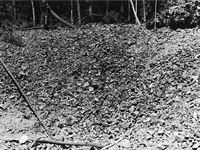| |
Evaluating
the Threat of Meteorite Impacts
|
"Although
earthquakes, volcanoes and hurricanes pose a more high-profile threat, the statistical
likelihood is that a populated area on Earth will be destroyed by an asteroid
within the next 40 years."
|  |
| 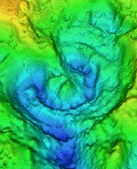
| Since
the Earth formed, there have been around 200 meteorite impacts large enough
to wipe out all life on the planet.
The
most recent "Extinction Asteroid" is well known. It hit the Earth 65 million years
ago and annihilated 50% of all animal species on the planet, including the
dinosaurs. It caused the Chicxulub impact crater pictured left.
|
| There
are currently 177 potentially hazardous asteroids which orbit close
to Earth.
Pictured
right is Ida which is 58 miles long and 23 miles across. If every asteroid in
our solar system glowed, the night sky would be white, not black.
|  |
| 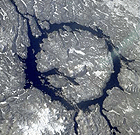
| A
crater 170 Km across was made in Manicouagan over 210 million years ago.
One
of the few massive impact craters which can still be seen clearly. Many ancient
impacts go unnoticed as lakes or amongst mountain ranges.
|
| The
Sahara Dessert bares the scars of an impact which left a crater 17 Km across.
Around
300 million years ago, a rock 1.5 Km across smashed into the dessert leaving marks
which are still visible today on this radar map.
| 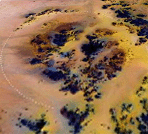 |
| 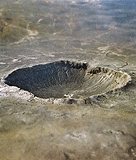
| 35,000
years ago an object only 25 metres across created this 1.2 Km crater in Arizona.
Meteors
on this comparatively tiny scale arrive roughly once every fifty years. Impacts
four times this size can be expected once every couple of centuries. Six out of
seven hit the ocean. |
It
is easy to be complacent when reading about
long-gone millennia and ancient
impacts...
but in more recent times....
| 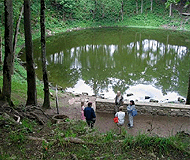
| Around
2000BC, while the Egyptians were in their 11th Dynasty, a Hiroshima-sized explosion
happened in Estonia.
The
forest burned for 6km and nine craters were blasted into the ground, with the
largest crater created being 110m wide.
|
| In
1863 a 10 metre asteroid broke into fragments before smashing into Saudi
Arabia with the force of 10 Hiroshima bombs.
Pictured
here is one of the three impact craters in the Wabar dessert, the largest being
116 metres in diameter.
| 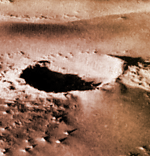 |
In
1908 Siberia was hit by a rock 50 meters across which destroyed
an area the size of Central London.
|
| The
infamous Tunguska event was once thought to be the most recent significant meteor
impact in Earth. The object exploded 5 miles above the ground but with the force
of 1000 Hiroshima atom bombs.
The total area of devastation was
2000 square Km.
As the object came through the atmosphere its tail was
over six hundred miles long and after the impact the effects could be felt half
way around the globe.
| 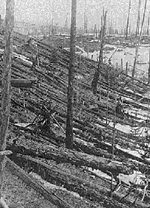 |
Another
huge meteor hit Brazil in 1930 with the force of 10 Hiroshima atom bombs.
Witnessed
by the natives as a huge explosion near the Amazon, and documented by an Italian
explorer.
|
| In
February 1947, a fireball brighter than the sun appeared in the sky and
then struck the Earth in Russia. The Sikhote-Alin meteorite impact was heard for
300km around and left a series of craters, the largest of which was 26m across. | |
|
In
1972 a meteor with the destructive power of 5 Hiroshima bombs entered
Earths atmosphere heading for a city….
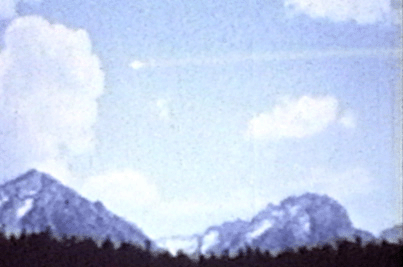
...by
an amazing piece of good fortune, its angle of descent was too shallow and it
bounced off the atmosphere, skimming it like a stone on a lake. Its trajectory
had been taking it straight towards Alberta. Amateur film footage shown above
of this gigantic shooting star tearing across the afternoon sky and its significance
has been re-appraised based on the recent findings regarding the threat of meteors.
Our
understanding now is that six out of seven objects hit the ocean but a significant
number exists to threaten our civilisation, or large sections of it.
A
large "Tunguska Event" can be expected every 100 years or so.
Smaller,
but still catastrophic impacts can perhaps be expected up to five times
per century.
Having had only two in the 20th century, not counting
the near-miss in 1972, and assuming that there are no more unknown impacts to
be discovered, we are long overdue for a visitation from space.
Click
here for Google Earth images and size-comparisons of craters. ©
1999 | |
|









